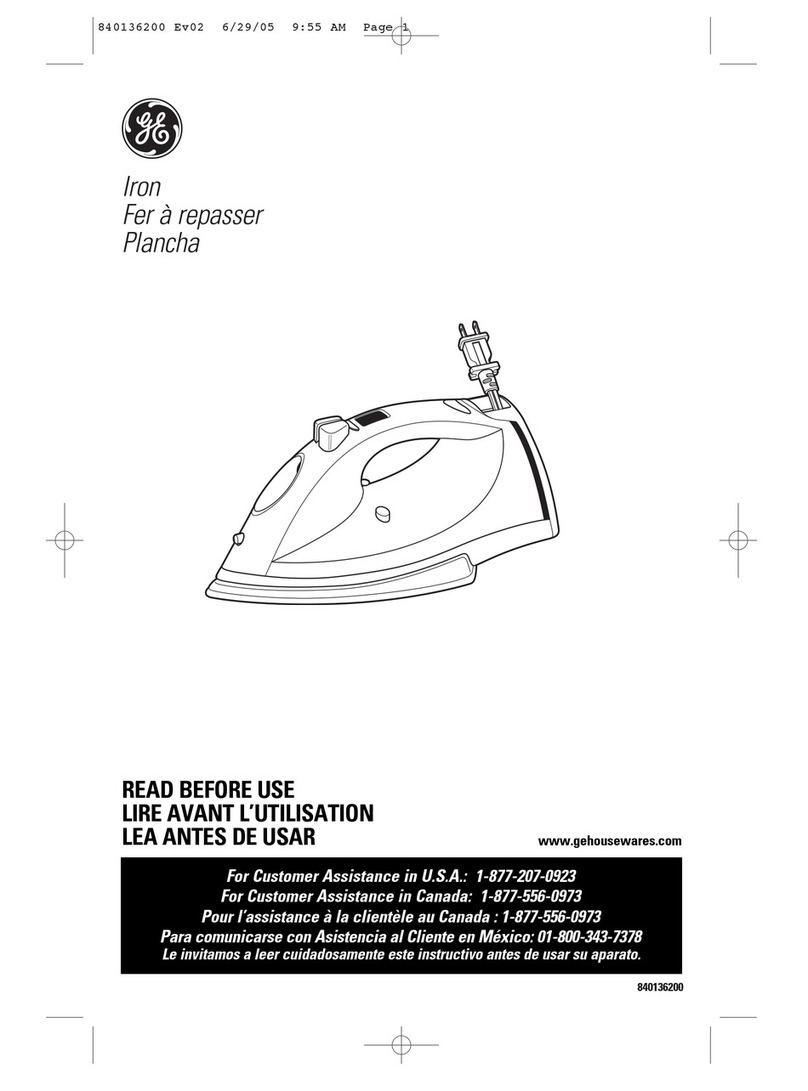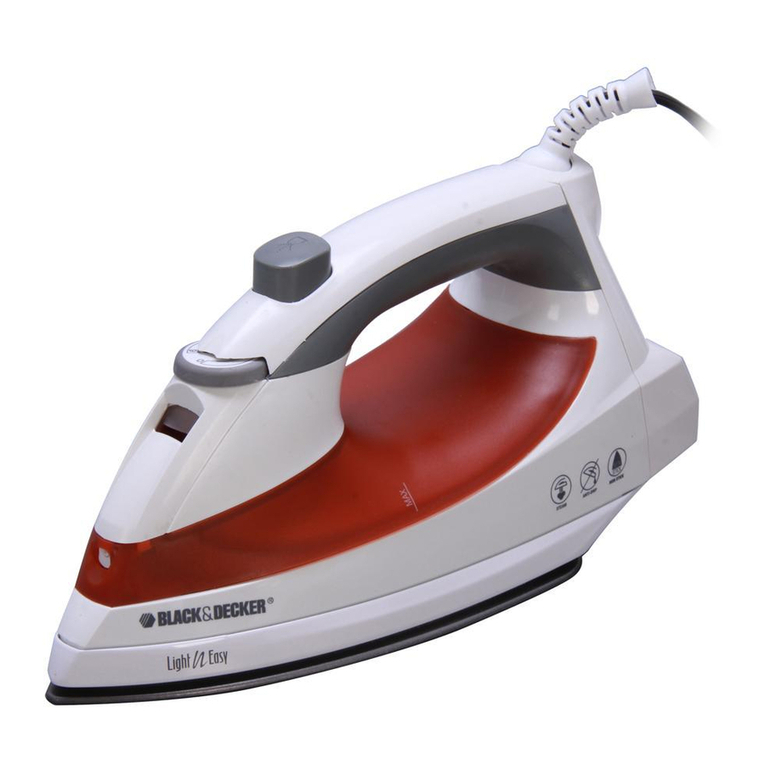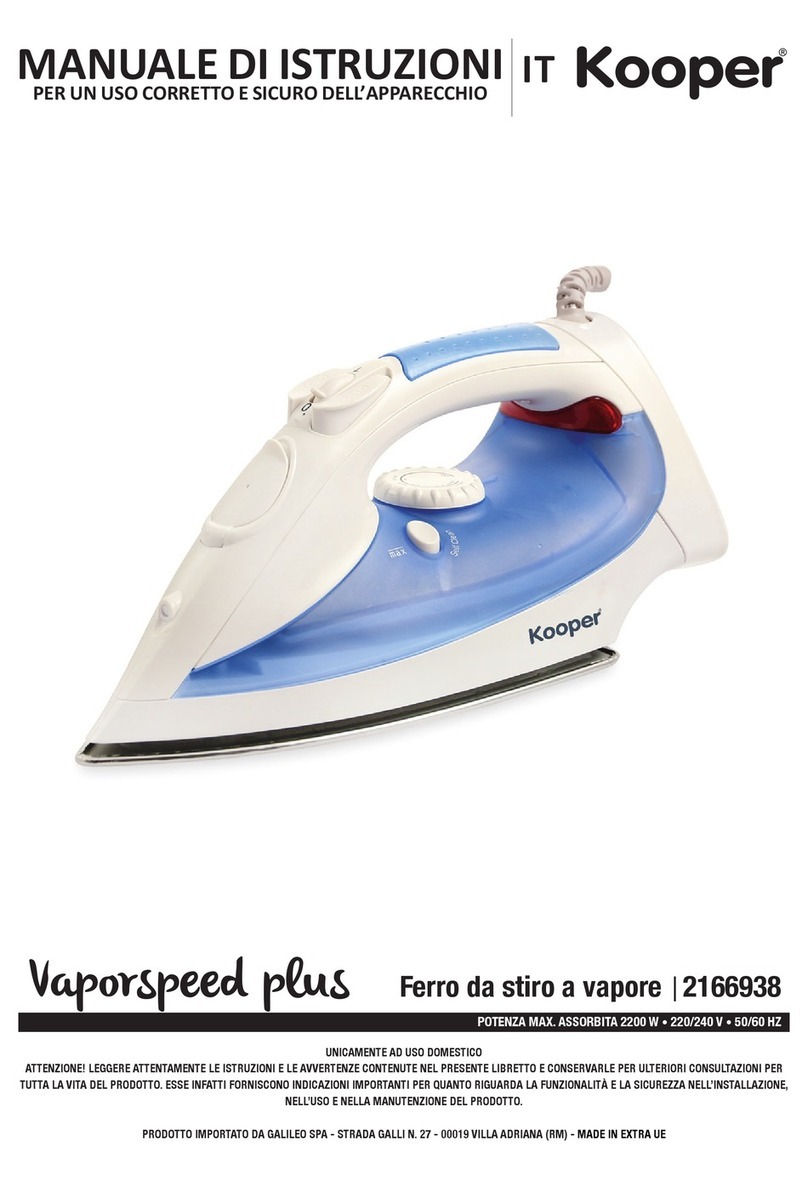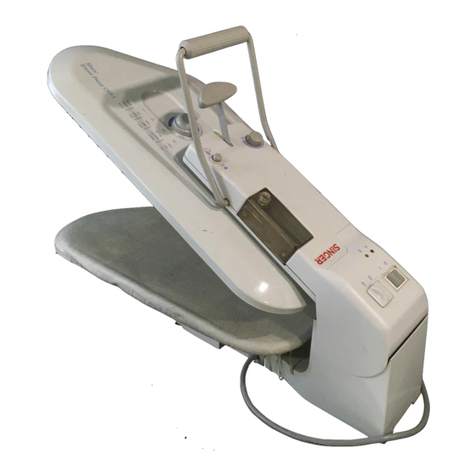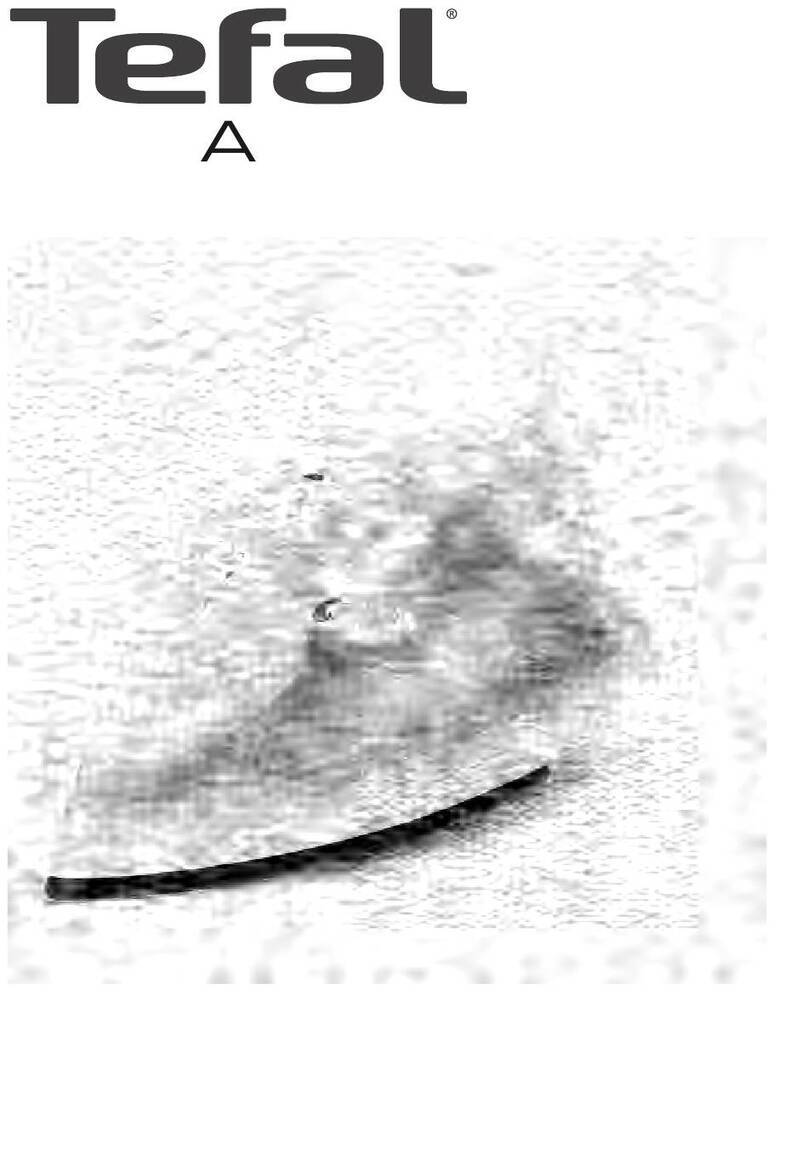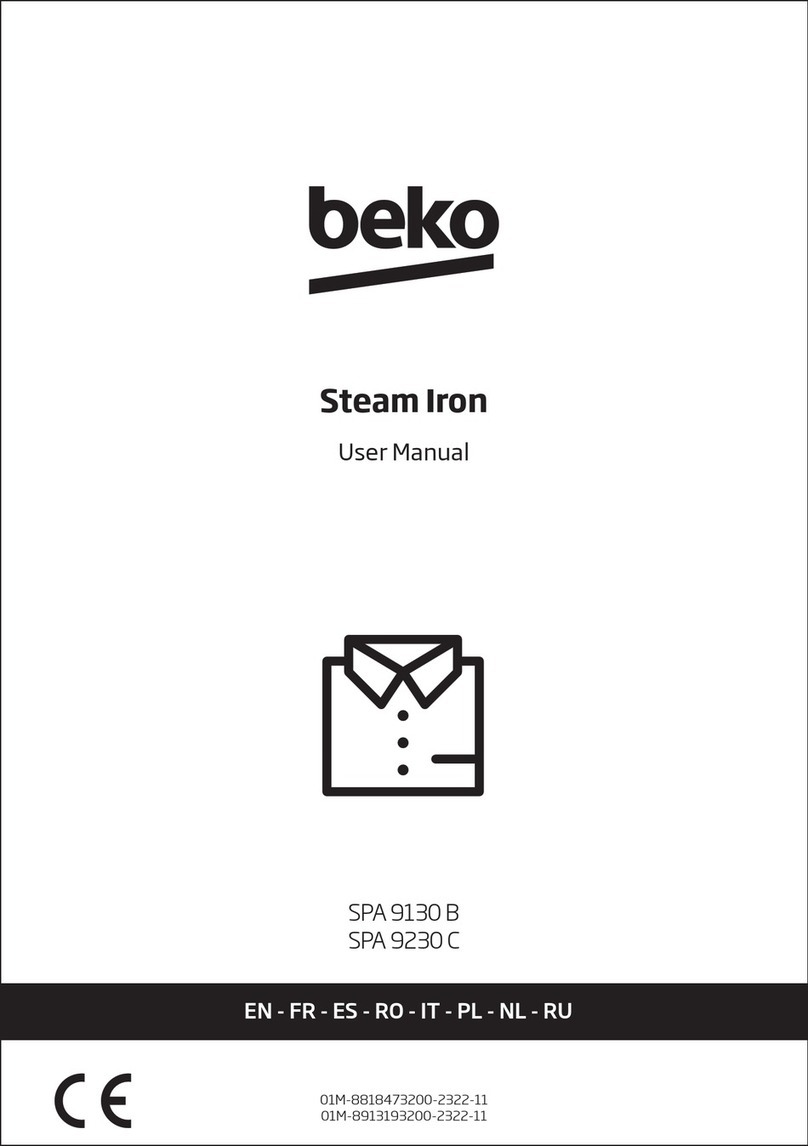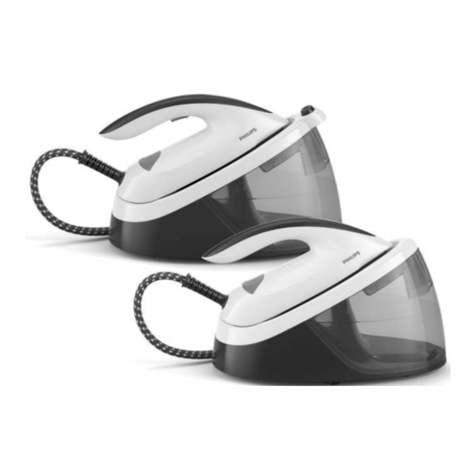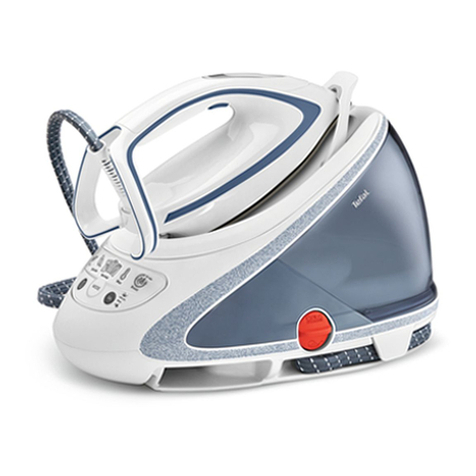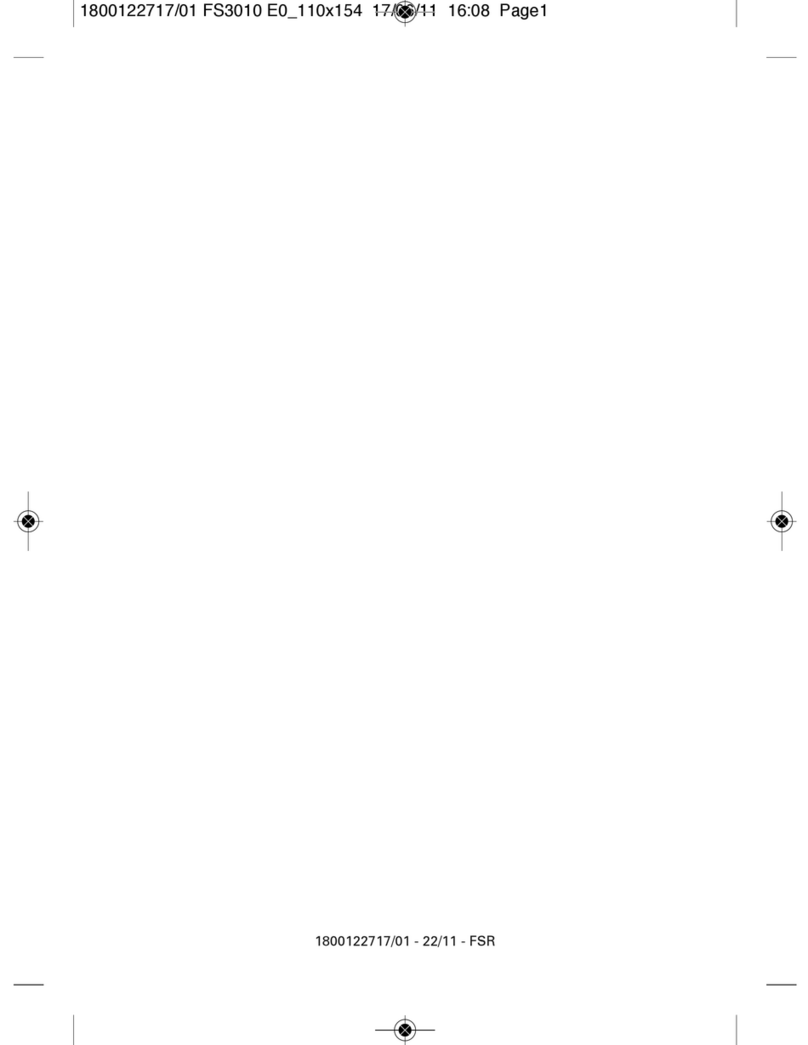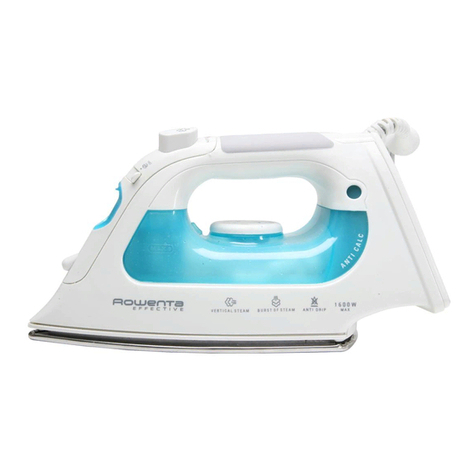GIRBAU PB32 Series Manual

Code no. 550038
Rev. no. 16/1018
Model
From Machine No.
PB32
PB/PBP51
X13
X20
2,175,001
2,190,001
2,205,001
2,210,001
Installation, Operation and
Maintenance Instruction manual for
Flatwork Ironer
GIRBAU, SA
Crta de Manlleu, km. 1
08500 VIC (Barcelona) SPAIN
National sales:
Tel. (+ 34) 902 300 359
International sales:
Tel. (+ 34) 938 862 219
Service:
Tel. (+ 34) 902 300 357
www.girbau.es
For USA & CANADA:
CONTINENTAL GIRBAU Inc.
2500 State Road 44
WI 54904 Oshkosh USA
Tel. 1(920) 231-8222
www.continentalgirbau.com
EN
PB32
PB/PBP51
X13***W
X20***W/F

Contents 2
Code no. 550038
Rev. no. 16/1018
INDEX
SAFETY INSTRUCTIONS .................................................................................................................................4
1. GENERAL DESCRIPTION OF THE MACHINE..........................................................................................12
1.1. Ironer description..............................................................................................................................12
1.2. Machines with gas heating. Diagram and description of the burner................................................14
1.2.1. Atmospheric burner................................................................................................................14
1.2.2. Radiant burner........................................................................................................................15
1.3. Machines with steam heating. Diagram and description of the steam circuit..................................16
1.4. Machines with electric heating. Description.....................................................................................16
1.5. Expected machine use and don'ts ...................................................................................................17
1.6. Protection, safety and control elements...........................................................................................18
1.7. EU declaration of conformity............................................................................................................20
2. RECEPTION STORAGE AND TRANSPORT .............................................................................................22
2.1. Receipt .............................................................................................................................................22
2.2. Storage.............................................................................................................................................22
2.3. Transport..........................................................................................................................................23
2.3.1. Transport with packaging.......................................................................................................23
2.3.2. Transport of machines without packaging .............................................................................24
2.4. Table of weight and dimensions.......................................................................................................26
2.4.1. Model PB32, X13. Table of weight and dimensions..............................................................26
2.4.2. PB/PBP51, X20 model. Table of weight and dimensions......................................................26
3. POSITIONING..............................................................................................................................................27
3.1. General information and location .....................................................................................................28
3.2. Area of usage...................................................................................................................................29
3.3. Environment conditions....................................................................................................................29
3.4. Room ventilation conditions.............................................................................................................30
3.4.1. Ventilation openings. Models with steam or electric heating.................................................30
3.4.2. Ventilation openings. Models with gas heating......................................................................31
3.5. Positioning and levelling the ironer ..................................................................................................32
3.6. Removal of shipping braces.............................................................................................................32
4. TECHNICAL AND CONNECTION DATA FOR THE MACHINE.................................................................34
4.1. General technical details..................................................................................................................34
4.2. Electrical connection data. Electrical protection devices .................................................................35
4.2.1. Models with gas or steam heating .........................................................................................36
4.2.2. Machines with electric heating...............................................................................................38
4.3. CE certified models. Specific values for models with GAS heating.................................................40
4.3.1. Atmospheric burner. Heating data.........................................................................................40
4.3.2. Radiant burner. Heating data.................................................................................................41
4.3.3. Maximum NOx values and classification ...............................................................................42
4.3.4. Categories of commercially available gases..........................................................................42
4.3.5. Details of gas connection.......................................................................................................43
4.3.6. Electrical data: power and consumption (Models with gas heating)......................................43
4.4. AGA certified models. Specific values for models with GAS heating...............................................44
4.4.1. Maximum NOx values and classification ...............................................................................44
4.4.2. Categories of commercially available gases..........................................................................44
4.4.3. Details of gas connection.......................................................................................................45
4.4.4. Electrical data: power and consumption (models with gas heating)......................................45
4.5. ETL certified models. Specific values for models with GAS heating................................................46
4.5.1. Atmospheric burner. Heating data.........................................................................................46
4.5.2. Radiant burner. Heating data.................................................................................................47
4.5.3. Details of gas connection.......................................................................................................47
4.5.4. Electrical data: power and consumption................................................................................47
4.6. Specific values for models with STEAM heating..............................................................................48
4.6.1. Heating data...........................................................................................................................48
4.6.2. Details of steam connection...................................................................................................48
4.6.3. Electrical data: power and consumption................................................................................48
4.7. Specific values for models with ELECTRIC heating........................................................................49

Contents 3
Code no. 550038
Rev. no. 16/1018
4.7.1. CE certified models................................................................................................................49
4.7.2. ETL certified models ..............................................................................................................49
4.8. Exhaust ducting. Technical and connection details.........................................................................50
4.9. Wiring diagram .................................................................................................................................51
4.9.1. PB32, X13 models .................................................................................................................51
4.9.2. PB/PBP51, X20 models.........................................................................................................52
4.9.3. Symbols and measurements for the installation, positioning and connection.......................53
4.9.4. Height of the work stations.....................................................................................................54
5. INSTRUCTIONS FOR CONNECTING THE MACHINE...............................................................................55
5.1. Electrical requirements.....................................................................................................................55
5.1.1. Characteristics of the electrical wiring....................................................................................56
5.1.2. Connecting the machine to the mains power supply.............................................................56
5.2. Gas connection.................................................................................................................................60
5.2.1. Installation characteristics......................................................................................................61
5.2.2. Connecting the machine to the supply network.....................................................................61
5.3. Changing the type of gas .................................................................................................................62
5.3.1. CE certified models................................................................................................................63
5.3.2. ETL certified models ..............................................................................................................64
5.3.3. Atmospheric burner. Changing the type of gas......................................................................65
5.3.4. Radiant burner. Changing the type of gas.............................................................................66
5.4. Steam connection.............................................................................................................................68
5.5. Connecting the exhaust ducting.......................................................................................................70
6. INITIAL START-UP OF THE MACHINE......................................................................................................72
6.1. Initial checks.....................................................................................................................................72
6.2. Machines with gas heating. Gas pressure control ...........................................................................73
6.2.1. CE models with atmospheric burner. Heating by natural gas, propane gas and propane-butane
mixture..............................................................................................................................................73
6.2.2. ETL models with an atmospheric burner. Natural gas heating..............................................74
6.2.3. AGA models with an atmospheric burner ..............................................................................75
6.2.4. CE models with radiant burner. Natural gas and propane gas heating.................................76
6.3. Machines with gas heating. Analysis of the combustion gases.......................................................77
6.3.1. Changing the position of the air extraction adjustment clapper valve....................................77
6.3.2. Adjusting the position of the Venturi ......................................................................................78
6.4. Machines with steam heating...........................................................................................................78
6.5. Machines with electric heating .........................................................................................................78
7. OPERATING AND USE. INTELI CONTROL. PB/PBP51, X20***W/F........................................................79
7.1. Main menu. Intervention modes.......................................................................................................80
7.2. Control panel....................................................................................................................................81
7.3. Stop modes ......................................................................................................................................82
7.3.1. Normal machine stopping ......................................................................................................82
7.3.2. General Stop..........................................................................................................................82
7.3.3. Emergency stop devices........................................................................................................82
7.4. Interpreting the main on-screen icons..............................................................................................84
7.5. Executing an ironing program..........................................................................................................85
7.5.1. Initiating an ironing program...................................................................................................85
7.5.2. Stopping the program.............................................................................................................86
7.5.3. SHUT DOWN mode...............................................................................................................86
7.5.4. Using the folder......................................................................................................................87
7.5.5. Indicating preferable “OPTIFEED” ironing area.....................................................................88
7.5.6. Modifying a program in execution..........................................................................................91
7.5.7. Program modification screens................................................................................................92
7.6. Programming mode..........................................................................................................................93
7.6.1. Access to programming mode ...............................................................................................93
7.6.2. Programming a new program.................................................................................................94
7.6.3. Folder.....................................................................................................................................96
7.6.4. Modifying existing programs ................................................................................................101
7.7. System tools mode.........................................................................................................................102
7.7.1. Configuration menu. Introduction and access......................................................................102
7.7.2. Information menu. Introduction and access.........................................................................105

Contents 4
Code no. 550038
Rev. no. 16/1018
7.7.3. Text messages.....................................................................................................................106
8. OPERATING AND USE. LOGI CONTROL. PB32, X13............................................................................107
8.1. Control panel..................................................................................................................................108
8.2. Modes of use..................................................................................................................................109
8.3. Stop modes ....................................................................................................................................110
8.3.1. Normal machine stopping ....................................................................................................110
8.3.2. General Stop........................................................................................................................110
8.3.3. Emergency stop devices......................................................................................................110
8.4. Executing an ironing program........................................................................................................111
8.4.1. Initiating an ironing program.................................................................................................111
8.4.2. Making specific operating changes as a program is running...............................................112
8.5. Advanced use mode.......................................................................................................................113
8.5.1. Access to the advanced mode.............................................................................................113
8.5.2. Advanced mode flowchart....................................................................................................114
8.5.3. Modifying the contents of programs. Menu Pro...................................................................115
8.5.4. Indicating preferable ironing area —“OPTIFEED” ..............................................................116
8.5.5. Information menu. Info menu...............................................................................................117
8.5.6. Modifying the operating parameters. Mod menu.................................................................118
8.5.7. Code for accessing the ADVANCED MODE. Ncod menu...................................................120
9. PERSONAL PROTECTION WEAR...........................................................................................................121
10. UNEXPECTED INTERRUPTION OF THE POWER SUPPLY AND PROLONGED HALT.....................122
10.1. Protection against burnt linen and ironing straps.........................................................................122
10.2. Prolonged stoppages ...................................................................................................................123
11. FREEING A TRAPPED PERSON............................................................................................................124
11.1. PB32, X13 model .........................................................................................................................124
11.2. PB/PBP51, X20 model.................................................................................................................125
11.2.1. Turning the pressure roller using the crank handle ...........................................................125
11.2.2. Releasing the pressure roller.............................................................................................126
12. ALARMS ..................................................................................................................................................128
12.1. List of main alarms:......................................................................................................................128
12.2. Expanded information on alarms related to the inverter..............................................................135
13. MAINTENANCE.......................................................................................................................................136
13.1. Checking safety mechanisms.......................................................................................................137
13.1.1. Checking the HAND PROTECTION device.......................................................................137
13.1.2. Checking the EMERGENCY STOP...................................................................................137
13.2. Cleaning the extraction filter.........................................................................................................138
13.3. Cleaning the photocells for the folder and for the SHUT DOWN disconnection..........................139
13.4. Steps for cleaning the air pressure switch circuit pipe.................................................................140
13.5. Removal of the protective guards ................................................................................................141
13.6. Preventative maintenance program.............................................................................................142
13.7. Possible operational anomalies....................................................................................................143
13.8. Most common spare parts listing..................................................................................................144
14. REMOVAL FROM SERVICE / DISASSEMBLING..................................................................................146

Safety Instructions 5
Code no. 550038
Rev. no. 16/1018
DANGER!
IMPORTANT SAFETY INSTRUCTIONS
CAUTION: To reduce the risk of fire, electric shock or injury to persons when using the machine, follow basic
precautions, including the following:
1. READ all instructions before using the washer and KEEP them in a prominent location for customer use.
For your safety, do not use the machine without having read the Instruction Manual. KEEP IT in an
easily accessible place in order to resolve any queries, and in case of loss request a new one from your
dealer.
2. Do not use this machine to handle laundry that has previously been sprayed, washed or impregnated with
petrol, dry cleaning solvents or explosive or inflammable substances. These substances GIVE OFF
VAPOURS that could ignite, explode or break down into toxic and/or highly explosive products.
3. DO NOT ADD petrol, dry-cleaning solvents, or other flammable or explosive substances to the wash water.
These substances give off vapours that could ignite or explode.
4. Specific note for machines supplied by water heating appliances. In exceptional conditions, water
heating appliances that have not been used for a minimum period for two weeks can produce hydrogen. If
the water heating appliance has not been used for a time, open the taps and purge the pipes, allowing water
to flow for a few minutes, before using any machine connected to it. This operation will allow the evacuation
of any accumulated gas. HYDROGEN GAS IS EXPLOSIVE, so do not smoke or light any flames during this
operation.
5. This machine must not be used by children.
Do not allow children to play with or inside the machine. KEEP children under strict supervision when they
are to be found in the vicinity of a machine in operation.
6. Before removing a machine from service or disposing of it, CONSULT THE INDICATIONS CONCERNING
DISMANTLING. As a general rule, BLOCK all moving parts of the machine and PREVENT THE RISK OF
BECOMING TRAPPED inside.
7. DO NOT GO INSIDE THE MACHINE OR DISMANTLE ANY KIND OF COVER ON THE MACHINE while it
is working.
8. Do not store or install the machine in areas exposed to the ELEMENTS or where it may be splashed by
water.
9. Do not tamper UNNECESSARILY with the machine’s controls.
10. DO NOT DISMANTLE ANY KIND OF COVER OR REPAIR OR REPLACE any part of the machine or carry
out any kind of maintenance unless it is properly identified and explained in the user instruction manual.
Even if it is, make sure you understand the instructions properly and have the proper skills and knowledge to
do the job.
11. DO NOT REMOVE any safety device OR MODIFY OR MANIPULATE any component or part of the
machine. DO NOT INSTALL any foreign components inside the machine.
12. Any part of the machine that is replaced may affect its operation and the user’s safety. For this reason, USE
ONLY THE MANUFACTURER’S ORIGINAL SPARE PARTS. Failure to comply with this warning can cause
serious accidents, malfunctions and the loss of the machine’s guarantee and certifications.
13. Breach of or failure to observe the legislation and regulations covering health, safety and prevention of
workplace risks applicable in the country where the machine has been installed, or actions contrary to
common sense CAN CAUSE personal injury or even death to the user.
14. Utilise the machine only for the uses established by the manufacturer and following the usage instructions
defined in the instruction manuals. Any use not defined in the manuals can cause additional risks. Pay
special attention to information headed DANGER, WARNING and PRECAUTION.
15. The room where the machine is located SHALL comply with the environment conditions (air venting,
temperature, humidity...) specified in the technical specifications table. NEVER INSTALL THE MACHINE IN
ENVIRONMENTS where it will be splashed with water or with high ambient humidity.

Safety Instructions 6
Code no. 550038
Rev. no. 16/1018
16. Delimitate danger areas and PREVENT public access to them with machine in operation. Do not expose
yourself to drainage areas or to vapour, condensation, fume or ventilation outlets.
17. All machines working with temperature present a fire risk. Take EXTREME care: Periodically the machine of
inflammable materials: lint, fluff, soot... KEEP the environment free of combustible materials and PLACE,
suitable extinguishers near the machine in easily accessible places.
Safety measures. Do not store or use petrol or other flammable vapours and liquids in the vicinity of this or
any other machine.
18. All installations necessary for the proper operation of the machine MUST be carried out by a duly accredited
Authorised Installation Company (see note 3) following the applicable legal regulations in the country of use.
19. The machine MUST be commissioned by the Authorised Technical Service in the presence of the customer’s
technical service (see notes 2 and 4) or a responsible person appointed by the customer.
20. This machine MUST BE USED by personnel who are properly trained in how to use it (see note 1).
21. NEVER START THE MACHINE NOR USE IT IN THE ABSENCE, INCORRECT POSITION OR
MALFUNCTION OF:
COVERS ( GUARDS) AND PROTECTIONS
SAFETY DEVICES
CONTROL ELEMENTS
22. DO NOT USE the machine if you notice any abnormal noise or smell or if you suspect that the machine is
faulty or defective.
23. If you smell gas, CLOSE the general gas line valve, DO NOT LIGHT flames, DO NOT SWITCH ON any
appliance, DO NOT TURN ON any electrical switch, OPEN doors and windows, EVACUATE the occupants
of the room, the building or the area and WARN the supply company or the fire service. DO NOT USE ANY
TELEPHONE INSIDE THE PREMISES.
24. On completion of the day's work, TURN OFF the manual fluid supply valves and DISCONNECT the electrical
power.
25. The inspections required by the regulations applicable to the country where the machine is being used must
be carried out. You are also recommended to request an overall, detailed service of the machine by the
Authorised Technical Service every year (see note 2).
26. INSPECTION, MAINTENANCE OR REPAIR OPERATIONS
DANGER!
Incorrect installation, adjustment, alteration, repair or maintenance of this machine may lead to material
damage, injury or even death.
Read the installation, operation and maintenance instructions carefully before installing the equipment or
carrying out maintenance work.
Before carrying out any action on the machine:
Close and mechanically lock the manual fluid supply valves.
Check that the bath has COMPLETELY drained, that no part of the machine is at a high temperature and
that no circuits or containers are under pressure.
Check that all moving parts of the machine are stopped or at rest. Securely fix all moving parts of the
machine that could cause an accident.
To reduce the risk of electrical shock:
COMPLETELY disconnect the machine from the original power source and check for accidental
reconnection. TURNING OFF THE ON SWITCH OR PRESSING THE STOP KEY ARE NOT ENOUGH.
Disconnect the electrical connection of any circuit external to the machine; for example external dosing
equipment, central vending points, feeders or folders, etc. The electrical connection of these circuits is
independent of the machine electrical connection.
To prevent the risk of electrical discharge caused by residual voltage, wait at least five minutes before
removing any guard or cover from the machine.
Failure to follow these warnings may cause a serious accident.
27. CONTACT the Installation Companies or the Authorised Technical Service (see notes 3 and 2) if you have
any doubt, anomaly or problem.
28. It is advisable to copy and enlarge the SAFETY INSTRUCTIONS and put them in a visible place in the
laundry.

Safety Instructions 7
Code no. 550038
Rev. no. 16/1018
29. THE MANUFACTURER ACCEPTS NO RESPONSIBILITY IF THESE SAFETY INSTRUCTIONS AND ALL
THE INFORMATION IN THE CORRESPONDING MANUALS ARE NOT FOLLOWED. KEEP THIS
MANUAL IN A SAFE PLACE FOR FUTURE REFERENCE.
NOTES:
(1) Trained personnel refers to those who have read and understood the Instruction Manual, who have been trained by the
Authorised Technical Service or by a representative of the customer present at the start-up who is familiar with the
operation of the machine and is authorised to use it.
(2) Authorised Technical Service (ATS) is one that has been recognised under contract and properly trained by the
manufacturer.
(3) Registered Installation Contractors are those officially approved by the government of the country the machine is to be
installed.
(4) Customer Technical Service (CTS) is one that has been authorised by the customer and which has sufficient basic
technical knowledge to correctly interpret and carry out the actions attributed to it in this manual. The manufacturer strongly
recommends that the customer should have its own technical service, particularly in laundries with large-scale machinery
installations.
Special note for gas-heated machines (as stipulated in EN 1020:2009).
These instructions are only valid if the symbol for the country is displayed on the apparatus. If the
symbol does not appear on the device, the technical instructions containing the information needed to
adapt the device to the operating conditions of the country need to be used.
Languagesused in many countries of the European Union or associated.
LANGUAGE
COUNTRY
German
DE, CH, AT, LU
English
GB, IE
French
FR, BE, CH, LU
Dutch
NL, BE
Italian
IT, CH
Swedish
SE, FI

Safety Instructions 8
Code no. 550038
Rev. no. 16/1018
SYMBOLS USED IN MACHINE LABELLING
Electrical risk
Safety warning indicating element with
electricity.
High Temperature risk
Handle with caution.
Use adequate protection.
Mechanical risk
Protection guard for moving parts.
Risk of inhaling harmful or irritant
vapours
Keep the doors/covers closed.
Use adequate protection.
Flame risk (only on some machines)
Protective guard for flame.
Risk of falling
Use proper access and safety methods.
Access prohibited
Refer to instruction
manual/booklet
SYMBOLS USED IN THIS MANUAL
Symbol used to highlight a possible
HAZARD, WARNING or NOTE.
This symbol is used to give relevance to any
precise explanation .
TRANSLATION OF THE ORIGINAL MANUAL

Safety Instructions 9
Code no. 550038
Rev. no. 16/1018
IMPORTANT INSTRUCTIONS FOR USE AND PRESERVATION
1. INTENDED USE OF THE MACHINE AND INAPPROPRIATE USE. This machine is conceived and
designed only for processing fabrics in a water bath or those that have previously been treated under these
conditions. Any use other than this is contraindicated without written authorisation from the manufacturer.
2. Maximum output, performance, reliability and durability are achieved when the machine is installed, used
and maintained correctly, and if a comprehensive and detailed service is carried out annually by the
Authorised Technical Service.
3. The machine’s MATERIALS that are in direct contact with the chemical products involved in treating the
laundry are detailed in the manual.
4. The user must consult the supplier of the chemical products USED THROUGHOUT THE WHOLE LINEN
TREATMENT PROCESS regarding the risks associated with its products and their combination. It must be
confirmed that the products are not flammable, ARE MUTUALLY COMPATIBLE, and that they will not
cause oxidisation or deterioration of the machine or any injury to the people using them.
It should be noted that, under certain usage conditions, hypochlorite (bleach) generates chlorine gas.
Chlorine is a corrosive, oxidising substance which, at high concentrations and temperatures, damages
stainless steel and elastomers.
This same effect can also be caused by other strongly oxidising agents, including ozone.
5. FOLLOW the treatment recommendations for each fabric indicated by its manufacturer. THE
MANUFACTURER OF THE MACHINE ACCEPTS NO RESPONSIBILITY FOR DAMAGE CAUSED BY
INAPPROPRIATE TREATMENT OF A FABRIC.
6. Periodically CLEAN the outside of the machine to prevent damage to its metal parts. This will improve
safety and extend its life. To clean the machine, use water and detergent. Rinse with a damp cloth and dry.
To remove accumulated lint, use a suitable vacuum cleaner. Water jet or pressurised steam cleaning is
prohibited.
7. NEVER use aggressive products to clean the machine or the premises. There are products on the market
that give off highly corrosive vapours.
8. If machine is left idle for long periods of time, it must be PROTECTED from humidity and temperature
variations.
9. Faults arising from improper machine operation may VOID WARRANTY.
10. When asking for information on your machine, MENTION the model and serial number. This information
can be found on the characteristics plate incorporated into the machine.
11. With every machine, the manufacturer provides all necessary technical information and the documents
required for its use. KEEP IT IN GOOD CONDITION.

Safety Instructions 10
Code no. 550038
Rev. no. 16/1018
WARNING!
TRANSPORT, INSTALLATION, INSPECTION, MAINTENANCE, REPAIR OR MODIFICATION
ROUTINES ON GIRBAU EQUIPMENT
1. The actions described in these instructions are strictly reserved for contractually AUTHORISED
TECHNICAL SERVICES (ATS) and personnel who have successfully completed training by Girbau
SA.
2. The company responsible for the Authorised Technical Service accepts full liability for the work done
and any possible consequences that may derive from it.
3. Any actions carried out by personnel who are not authorised by the manufacturer will be considered to
be improper and will result in the automatic voiding of the machine’s warranty.
4. The manufacturer will not accept responsibility for any physical and/or material damage caused by
actions performed on the machine undertaken by unauthorised personnel.
5. Do not store or install the machine in areas exposed to the ELEMENTS or where it may be splashed
by water.
6. The room where the machine is located MUST comply with the environmental conditions (air venting,
temperature, humidity, etc.) specified in the technical specifications table. NEVER INSTALL THE
MACHINE IN ENVIRONMENTS where it will be splashed with water or with high ambient humidity.
7. All installations required for the proper operation of the machine MUST be carried out by a duly
accredited Registered Installation Contractors, in compliance with the legal regulations applicable in
the country of use.
8. Once the corresponding operation has been performed, the ATS staff must perform the final machine
inspection.
9. Avoid carrying out any action on the machine without having first read and understood the machine’s
Installation and Operating Manuals, paying special attention to the Safety Instructions.
10. In any action that modifies the values of the machine’s specifications plate, it should be borne in mind
that:
- It is the responsibility of the ATS to check that the external installation for the machine has been
modified and adapted to the new requirements, particularly to those regarding ducting and
electrical protection.
- It is the responsibility of the ATS to update the specifications plate, in accordance with the new
operation conditions, once the final machine inspection has been performed.
11. Carrying out transport, installation, inspection routines, adjustments, maintenance, repairs, cleaning or
any work on the machines without applying safety measures or having the necessary technical know-
how can lead to ELECTRICAL SHOCK OR SERIOUS ACCIDENTS.
12. When tools designed for specific transport, installation, maintenance and repair routines are available,
their use is compulsory in order to avoid unnecessary risks.
13. Before carrying out any procedures on machines fitted with pneumatic or hydraulic circuits:
- Make the machines COMPLETELY SAFE by following the instructions set out in the corresponding
Manuals or by wedging them with wooden blocks where necessary.
- Bear in mind that working on a component without having previously understood the role that it
performs in the circuit as a whole involves a high risk of suffering a SERIOUS ACCIDENT.

Safety Instructions 11
Code no. 550038
Rev. no. 16/1018
14. BEFORE CARRYING OUT ANY inspection routine, adjustment, maintenance, repairs, cleaning or
any work on the machine, DISCONNECT IT FROM ALL THE ENERGY SOURCES.
- COMPLETELY disconnect the machine from the power supply and prevent the possibility of
accidental reconnection by mechanically locking the automatic external switch and/or the switch
breaker. Stopping the machine with the NORMAL STOP key or push-button is not enough.
- Disconnect the electrical connection of any circuit external to the machine; for example external
dosing equipment, external vending units, folders or ironer feeders. These circuits are independent
of the supply to the machine.
- Before beginning any procedure on machines equipped with an inverter or equipment with
capacitative loads, wait for at least five minutes (10 minutes on equipment with a power rating
greater than 25 kW) after the electrical disconnection, to eliminate risk of residual voltage.
- Close and mechanically lock the manual WATER, GAS, STEAM, THERMAL OIL, COMPRESSED
AIR, etc. supply valves.
- Check that the water bath has COMPLETELY drained, that no part of the machine is at an
excessively high temperature and that no parts are in movement through inertia.
15. DANGER! Some fault localisation procedures require checking at different points of the electric circuit
with the machine connected to the power supply and other supply sources. When carrying out these
procedures, respect the following instructions:
- The appropriate checks must be carried out by ONLY ONE PERSON.
- During these procedures, ONLY remove the protective covers from the electric circuit and/or the
inverter. Never remove the covers protecting the moving parts of the machine.
16. THE MANUFACTURER ACCEPTS NO RESPONSIBILITY IF THESE SAFETY INSTRUCTIONS
AND ALL THE INFORMATION IN THE CORRESPONDING MANUALS ARE NOT FOLLOWED.
SAVE THESE INSTRUCTIONS.

General description 12
Code no. 550038
Rev. no. 16/1018
1. GENERAL DESCRIPTION OF THE MACHINE
This INSTALLATION, OPERATION AND MAINTENANCE manual applies to flatwork ironers models/ PB32,
X13, PB51, PBP51, W *** X20, X20 *** F, in the different models in terms of different size, heating and control
systems.
1.1. Ironer description
The ironer consists mainly of the following elements:
Structural support, consisting of:
Two side base-frames with various longitudinal connecting elements.
An ironing roll, supported by wheels attached to the side base-frames. The surface of the roll is machined to
provide even ironing.
In systems with gas or electric heating, the roll is open at the ends and allows the burner or the heating element
to be fitted inside.
In the steam heating system, the roll forms an internal chamber through which the steam circulates.
A set of ironing straps drawn by the roll that press the linen down against the roll.
An upper roller that presses the linen through the ironing straps.
A rear roller that maintains the tension of the ironing straps.
A table equipped with feeding straps for feeding in linen.
Two trays the same length as the roll, one for feeding in articles, and the other for receiving items being
processed.
Roll rotation
Roll rotation is produced by an electric gear motor controlled by an inverter that allows the speed to be changed.
Motor rotation safety control.
Chain-driven transmission between the output of the gear motor and a ring gear at one end of the roll.
Three heating systems
Gas heating.
A gas burner housed inside the roll.
A fume suction pipe located inside the roll.
Monitoring of lighting and presence of flame.
Option of an atmospheric burner. Gas input controlled by a double winding solenoid coil: Class B and Class
J (in accordance with EN1020).
Option of a radiant burner. Gas input controlled by a Class B double winding solenoid coil (in accordance
with EN1020). Air and gas premixing fan.
Steam heating (only available on Models PB/PBP51 and X20).
Roll with inner chamber (pressurised vessel in accordance with Directive 97/23/EC). The steam input is
controlled by a solenoid valve and the corresponding ducts and filters for transporting steam and
condensates.
The steam input and drainage of the roll condensates take place through a rotary seal.
A pressure relief valve prevents overpressure in the steam circuit.
A pressure gauge indicates the pressure in the steam circuit.
Electric heating.
The temperature of the roll is obtained from electric heaters located inside the roll and controlled by
contactors.
EQUIPMENT NAME
Although the laundry equipment to which this manual refers is known as the FLATWORK IRONER, for
the purposes of this present manual it will be generally referred to as the Ironer.

General description 13
Code no. 550038
Rev. no. 16/1018
Fume and vapour extraction
Centrifugal extraction of the vapours from the linen ironing, and of the fumes from the combustion (gas version).
Exhaust circuit lint filter.
Extractor operation safety control.
In models with gas heating, the fume extraction system has a flow rate control system that allows the
combustion to be adjusted.
Controls
Overall ironer operation controlled by a microprocessor.
Serial communication with the inverter.
Analogue temperature control.
Specific software that allows control and management of the ironing processes. The roll’s temperature and
speed parameters during the ironing process can be selected automatically or manually at the discretion of the
user.
Control panel. Operator/system interface consisting of keyboard and display.
Alarm messages to aid in diagnosing possible malfunctions.
LOGI CONTROL. Models PB32 and X13
Interface: alphanumeric display and keyboard.
10 pre-recorded and modifiable ironing programs.
Manual and automatic roll speed control.
Changing of the ironing parameters while a program is running.
TEST program for diagnosing problems.
INTELI CONTROL. Models PB/PBP51 and X20
Interface: graphic screen and keyboard.
Storage capacity for 50 ironing programs.
Manual and automatic roll speed control.
Changing of the ironing parameters while a program is running.
TEST program for diagnosing problems.
PBP51 and X20***F models. Models with a linen folder.
Description of the folder.
Longitudinal linen folding system located at the lower front and based on a swinging arm driven by an electric
linear actuator.
Straps and linen extraction tray powered by an electric motor and clutch.
Photocells that detect the linen passing. There is one ore more photocells fitted to the feeding tray and another
before the linen reception area.
As an option, the machine can be equipped with three pairs of photocells to aid in ironing narrow articles using
the entire surface of the ironer.
Software to measure the length of the folded pieces and determine the number and width of the folds. These
calculations can be made manually or automatically, as the operator wishes.
Specific information relating to protection, safety and control elements. See Section 1.6 of this
chapter.

General description 14
Code no. 550038
Rev. no. 16/1018
1.2. Machines with gas heating. Diagram and description of the burner
1.2.1. Atmospheric burner
Diagram of the burner (Fig. 1.1)
A.......... Filter
B.......... Solenoid valve
C.......... Flexible section
D.......... Injector
E.......... Venturi pipe
F.......... Primary air filter
G......... Burner
H.......... Control system
I........... Ignition electrodes
J.......... Ionisation electrode
K.......... Manual stop-valve
Fig. 1.1
Diagram of the AGA burner (Fig. 1.2)
A.......... Filter
B.......... Solenoid valve
C.......... Flexible section
D.......... Injector
E.......... Venturi pipe
F.......... Primary air filter
G......... Burner
H.......... Control system
I........... Ignition electrodes
J.......... Ionisation electrode
K.......... Manual stop-valve
L.......... Ignition transformer
Fig. 1.2
Description of operation (Fig. 1.1 and 1.2)
When the ironer control requests heating, the burner control system (H) subjects the ignition electrodes (I) to a
high voltage for a limited time to produce an electrical discharge; while power is simultaneously fed to the
solenoid valve (B) to open the gas flow.
The gas enters the burner via a single nozzle (D).
The ionisation electrode (J) detects the flame.
If the presence of a flame has not been detected after a certain time following the ignition order, the solenoid
valve is closed, an alarm report is issued and the burner control enters safety mode.
See Section 1.6. Safety and control elements.

General description 15
Code no. 550038
Rev. no. 16/1018
1.2.2. Radiant burner
Diagram of the burner (Fig. 1.3)
A......... Filter
B......... Solenoid valve
C......... Flexible section
D......... Injector
E.......... Venturi
F.......... Air filter
G......... Burner
H......... Control system
I........... Ignition/Ionisation electrode
J.......... Ionisation electrode
(USA/CANADA models only)
K......... Manual stop-valve
L.......... Premix fan
Fig. 1.3
Description of operation (Fig. 1.3)
When the ironer control requests heating, the burner control system (H) starts up the air premixing fan (L) and
subjects the ignition electrodes (I) to a high voltage for a limited time to produce an electrical discharge; while
power is simultaneously fed to the solenoid valve (B) to open the gas flow.
The gas enters the burner via a single nozzle (D).
The ionisation electrode (J) detects the flame.
If the presence of a flame has not been detected after a certain time following the ignition order, the solenoid
valve is closed, an alarm report is issued and the burner control enters safety mode.
Electrical specifications of the premix fan
CE certified models: 230V/50Hz. 55W. Class B
ETL certified models: 120V/50/60Hz. 68W. Class H

General description 16
Code no. 550038
Rev. no. 16/1018
1.3. Machines with steam heating. Diagram and description of the steam circuit
Only available on models PB/PBP51**, X20
Diagram of the steam circuit (Fig. 1.3)
A......... Input filter
B......... Solenoid valve
C......... Safety valve
D......... Flexible input pipe
E......... Rotating seal
F......... Camera in the roll occupied by the steam
G......... Condensation
H......... Syphon pipe
I.......... Flexible output pipe
J......... Output filter
K......... Purger
L......... Pressure gauge
Fig. 1.4
Description of operation (Fig. 1.4)
When the ironer control requests heating, the microprocessor opens the solenoid valve (B), allowing the steam
to enter the roll (F) through a two-way rotary seal (E).
The contact of the fabric with the ironing surface cools the steam inside the container. As the steam changes to
liquid (G), the condensate (under pressure) is drawn by a siphon tube (H) through the same rotary seal and
expelled to the outside via a steam trap (K) that prevents the exit of steam and releases any air that may be
found inside.
The input filter (A) protects the valve from any impurities that may be present in the steam supply circuit.
The output filter (J) protects the steam trap from any impurities.
The safety valve (C) prevents the container from being subjected to a pressure higher than the maximum
allowed.
The pressure gauge (L) indicates the pressure inside the roll.
1.4. Machines with electric heating. Description
Set of electrical elements mounted on a support that keeps them positioned close to the inner surface of the roll.
Depending on the model and voltage of each machine, they are controlled by one or two contactors.
See the wiring diagram in the documentation supplied with the machine.

General description 17
Code no. 550038
Rev. no. 16/1018
1.5. Expected machine use and don'ts
CAUTION!
APPROPRIATE USE:
THIS MACHINE HAS BEEN CONCEIVED AND DESIGNED FOR THE INDUSTRIAL IRONING AND
DRYING OF FLAT LAUNDRY ITEMS WASHED IN WATER FREE FROM INFLAMMABLE OR VOLATILE
PRODUCTS. ANY OTHER USE DIFFERENT TO THAT DESCRIBED, WITHOUT WRITTEN
AUTHORISATION FROM THE MANUFACTURER, WILL BE TAKEN AS INAPPROPRIATE TO THE
TERMS OF USE.
CAUTION!
ONCE THE WASHING PROCESS HAS ENDED, THE RESIDUAL MOISTURE LEVEL OF THE LINEN
MUST BE HIGHER THAN 40%.
In order to obtain the required residual moisture level, proceed as follows:
If a washing machine with a high spin speed is used, once the washing process has ended,
proceed directly to the ironing without using the dryer.
If not using a washing machine with a high spin speed, once the washing process has ended, dry
the linen previously using a dryer until an approximate residual moisture content of 50% is
reached.
INADVISABLE USE:
NEVER operate the machine without all the covers and protection devices being correctly in place and fastened.
To avoid deterioration of the ironer, the following points must be taken into account:
Do not iron linen previously treated or washed with petrol, dry cleaning solvents, and other flammable or
explosive substances. These substances GIVE OFF VAPOURS that could ignite or explode.
Do not iron articles of linen whose composition impedes water retention.
Do not insert linen with hard components which can damage the surface of the roll or the fabric of the ironing
straps, such as buttons, zippers, metal components, tissues containing rubber etc. into the ironer.
Do not iron fabric or fibres at temperatures above those recommended by the manufacturer of the material.
Do not put linen containing components unable to withstand ironing temperatures into the ironer.
While ironing, avoid mixing articles of different thicknesses and humidities, since this will slow down the
ironing to the detriment of fine materials.
Do not use reverse rotation for any use other than to free a trapped person or object. See Section 11,
RELEASE OF A TRAPPED PERSON.
On machines with steam heating, avoid operating when the roll is cold. THE ROTARY SEAL CAN BE
DAMAGED IF RUN DRY.
NEVER IRON WITHOUT ALTERNATELY COVERING THE IRONING AREA (RIGHT/ LEFT). Follow the
screen to cover the hottest area of the roll at all times.
Do not switch off the power with the machine at a temperature above 110ºC EXCEPT IN CASE OF
EMERGENCY.
In the case of small items, do not leave excessive space free across the width of the roll.
Do not put the machine on minimum speed during the roll’s warming and cooling cycles.
Do not halt the machine if the ironing straps are not completely dry, EXCEPT IN CASE OF EMERGENCY.
To prevent the ironing straps from remaining damp and causing rusting in the roll, avoid ironing during the
cooling cycle.
Do not iron at temperatures below 100ºC, since this could lead to rusting in the roll.
FOLDER VERSION
Do not attempt to fold items without covering the photocell.
Do not fold more than one article at a time except on a machine fitted with the optional triple photocell, in
which case three items can be fed in at a time provided that they are of equal length.

General description 18
Code no. 550038
Rev. no. 16/1018
1.6. Protection, safety and control elements
DANGER!
NEVER OVERRIDE A PROTECTION, SAFETY OR CONTROL DEVICES.
NEVER OPERATE THE MACHINE WITHOUT ALL THE SAFETY GUARDS CORRECTLY IN PLACE AND
FIXED.
Safety guards
To safeguard the operator, a set of guards screen the machine from its surroundings.
Switch breaker
To connect or disconnect the machine from the external power supply.
Emergency stop button
The emergency stop button is a SAFETY device. The machine is equipped with 1 emergency stop device which
is identified with a red button on a yellow background and which is located on the right-hand front cover. The
function of this element is to STOP the machine IMMEDIATELY and keep it halted.
Hand protection (movable guard with locking device)
The hand protection guard is a SAFETY element consisting of a tilting cover located on the machine’s feeding
tray designed to prevent the hands from being inserted into the roll and the trapping point between it and the
pressure roller.
Pushing or pulling the movable cover HALTS the roll immediately. The machine will remain in this state until the
cover is moved back to the resting position.
The hand guard stop is also assigned to operate as a safety stop from any part of the introduction zone.
Checking the proper functioning of the hand guard is an essential prerequisite for starting up the ironer.
Temperature probes
These constantly monitor the temperature of the surface of the ironing roll, adapting it to the programmed value.
PB/PBP51, X20 models with steam heating and PB3215, X13 models: 1 probe.
Other models: 3 probes.
Electric circuit safety measures
To protect the electric circuit against external malfunctions and prevent any malfunctioning causing damage to
the operator. The principal ones are: Automatic switches, circuit separation transformer, protection for the
motors, external protection (EP). Protection fuses of the control circuit.
Pressure switch of maximum pressure
Controls the suction in the exhaust circuit.
Minimum operating pressure: PB32, X13: 6 mm.c.a. (0.24 in.wc.)
PB/PBP51, X20: 4 mm.c.a. (0.16 in.wc.)
In case of a drop in suction in the exhaust circuit, the pressure value decreases, and the pressure switch stops
the machine from running and also emits an alarm.
Safety thermostat
This limits the surface temperature of the roll. It protects against an overheating of the roll caused by a fault in
the system regulating the ironing temperature. Tared to 200ºC (392ºF).
Safety when starting the flatwork ironer
If a momentary interruption of the power supply occurs, the machine shuts down at once and does not resume
until the corresponding start button is pressed.
Heating system start-up safety feature
A power cut or the detection of an alarm automatically switches off the heating system, and it does not resume
until the corresponding Iand and buttons are pressed.

General description 19
Code no. 550038
Rev. no. 16/1018
ADDITIONAL SAFETY MEASURES FOR STEAM MACHINES: Viewing and controlling the pressure in the
steam circuit.
Pressure gauge for viewing steam circuit
This displays the steam pressure as it enters the machine.
Safety valve
This prevents the steam pressure inside the roll from exceeding the authorised operating limit.
ADDITIONAL SAFETY FEATURES FOR GAS-HEATED MACHINES:
Flame control
Burner flame safety detection.
Ignition delay
With each ignition order, there is a delay of 15 seconds before the gas safety valve opens. During this time any
gases that may remain inside the roll are flushed out.
If the gas burner fails to ignite, or there is an alarm, there is an ignition delay of 90 seconds. This time period is
stored in the ironer control memory, and the delay will be implemented in full even if the machine is
disconnected from the power supply.

General description 20
Code no. 550038
Rev. no. 16/1018
1.7. EU declaration of conformity
MODEL PB32
EU DECLARATION OF CONFORMITY
Manufacturer: GIRBAU S.A.
Address: Ctra. de Manlleu, km 1, 08500 Vic, Barcelona, SPAIN
Identification of the machine
Generic denomination:
Flatwork ironer
Planchadora –secadora
Zylindermangeln
Sécheuse –repaseuse
Mangano asciugante
Planxadora –assecadora
Passadora –secadora
熨烫机–烘干机
Function:
Ironing and drying flat clothes washed in water
Planchar y secar ropa plana lavada en agua
Heiß- und Trockenmangeln von im Wasserbad gewaschener Flachwäsche
Repasser et sécher du linge plat lavé à l’eau
Stirare asciugare biancheria piana lavata in acqua
Planxar i assecar roba plana rentada en aigua
Passar e secar roupa plana lavada em água
湿洗的布草的熨烫和烘干
Type:
Cylinder
De cilindro
Walzenmangel
À rouleau
A rullo
De cilindre
De calha
汽缸式
Model: PB-32
The manufacturer declares under its sole responsibility that the specified equipment has been manufactured in compliance
with:
El fabricante declara bajo su exclusiva responsabilidad que el producto especificado se ha fabricado conforme a:
Der Hersteller bestätigt, dass das vorstehend bezeichnete Produkt gemäß den folgenden Richtlinien:
Le fabricant déclare, sous sa seule responsabilité, que le produit spécifié a été fabriquée conformément á:
Il fabbricante dichiara, sotto la sua esclusiva responsabilità, che il prodotto specificato é fabbricato secondo:
El fabricant declara, sota la seva exclusiva responsabilitat, que el producte especificat s’ha fabricat conforme a:
O fabricante declara sob a sua inteira responsabilidade que o produto referido é fabricado em conformidade com:
制造商全权声明,指定产品的制造符合以下要求:
2006/42/CE Machine Safety Directive
Main harmonized standards: EN ISO 10472-1:2008, EN ISO 10472-5:2008, EN 12100:2010, EN 13849-1:2015
2014/35/EU Low Voltage Directive
Main harmonized standards: EN 60204-1:2010
2014/30/EU Electromagnetic Compatibility Directive
Main harmonized standards: EN 61000-6-3:2007, EN 61000-6-2:2005, EN 61000-3-2:2014, EN 61000-3-3:2013
2016/426/EU Gas Appliances Regulation (for models with gas heating). Conformity assessment: Modules B+D.
Main standard: EN1020:2009.
N.B.: LGAI Technological Center S.A. Number: 0370. Barcelona (Spain).
Module B: EU Type-Examination. Certificate: 370 CT3016. Date of issue: 25/05/2018. Expiry date: 25/05/2028.
Module D: Quality Management System. Certificate: 0370-GAR-3018/D. Date of issue: 25/05/2018. Expiry date: 01/12/2019.
2011/65/EU Hazardous Substances in Electrical and Electronic Equipment Directive
Main harmonized standards: EN 50581:2012
2012/19/EU Waste Electrical and Electronic Equipment Directive (not a CE Marking Directive)
This manual suits for next models
29
Table of contents

